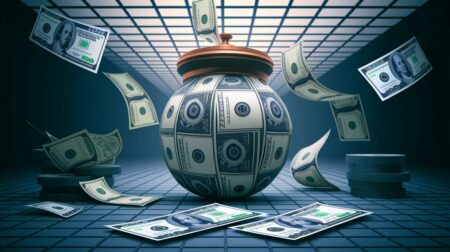Marine aquaculture, or mariculture, already accounts for a significant amount of the world’s food supply and nearly all of its harvested seaweed. For the last five decades, the industry has grown by 7.5% each year. It’s only expected to grow in the future, so scientists are working out ways to reduce the industry’s greenhouse gas (GHG) emissions.
In a newly published paper, an international team of researchers from the University of Adelaide, The Nature Conservancy, and the NOAA National Marine Fisheries Office of Aquaculture in the United States detail how specific marine products can continue to meet the growing need for food in more climate-friendly ways.
“Not all food is created equal in terms of climate impacts,” the study authors said. “Large variability exists in the GHGs emitted per portion of protein produced, both within and between food production sectors.”
Seafood has advantages when compared with livestock, not the least of which is land use. The total GHG of farming on land, for both agriculture and livestock, is estimated at between 4 and 6.6 billion metric tons (Gt) of CO2e per year. The researchers note that the best estimate of total GHG emissions from aquaculture, both marine and freshwater, is 385 million metric tons (Mt) CO2e.
But many previous studies don’t look at specific products, so the BioScience paper focused on the specific ways that three types of mariculture—seaweed, bivalves, and finfish—could be improved to reduce climate impacts.
Of the three, seaweed accounts for the lowest emissions. The available data puts the number at 22 kg of CO2e per metric ton, on average, with most of it coming from farming activities. But that rises considerably when product transportation is factored in. Solutions meant to limit emissions include improved site selection, climate-friendly farming practices and better seaweed species selection.
One important benefit of seaweed is carbon sequestration, with seaweed mariculture offering an opportunity to store carbon. At least one tropical seaweed, called Asparagopsis taxiformis, shows some promise in reducing methane emissions when it’s mixed into livestock feed. Biofuels and biochar may also offer benefits from seaweed, although many technical obstacles still remain.
Like seaweed, mollusks, oysters, mussels and other bivalves don’t require a lot of feed and other inputs. One recent estimate put the emissions from bivalve production at just 7.6% of those created by beef, pork and chicken farming. But the GHG estimates vary widely because there are so many different farming practices. They can rise to as high as 2,744 kg of CO2e per ton when transportation is included.
Also like seaweed, the bivalves serve to sequester carbon. Their shell waste can be used in other industries. But harvesting practices such as dredging, as well as the farming bed designs, can have negative impacts. One solution lies in the use of raised racks set on poles, in order to limit the impacts to seagrass and the seabed.
For finfish, the authors’ best estimate is that the industry generates 3,271 kg of CO2e per ton, which can rise to 44,400 kg of CO2e per ton when considering transport on other factors. There is wide variability in the emissions, though, based on the fish species, their location, the type of feed, and the energy source that powers the operation. Emissions also are linked to how much waste is released into seawater and the farming impacts on the habitat.
“For example, Atlantic salmon can be produced with relatively low GHG emissions comparable to or only marginally higher than some mollusks,” the authors said, noting that such low emissions are nonetheless rare. Careful site selection and shifts to renewable energy are among factors that can limit the climate impacts.
The authors note that better GHG emissions accounting is key to improving the mariculture industry.
“We also hope to assist in aligning the mariculture industry with carbon accounting, offsetting, and crediting schemes that are focused on either achieving demonstrable GHG emissions reduction or carbon sequestration,” they said. “This is currently hindered by the lack of specific mariculture policy frameworks and knowledge gaps that prevent effective carbon accounting.”

Did you like it? 4.4/5 (20)







